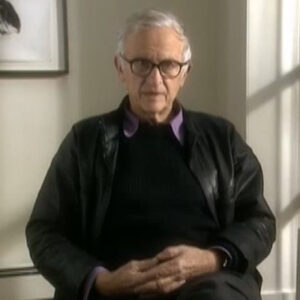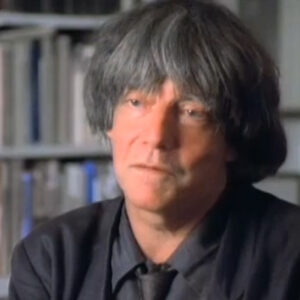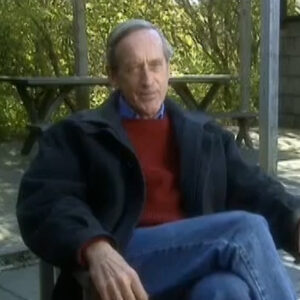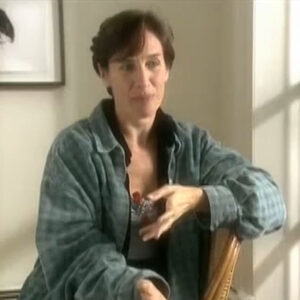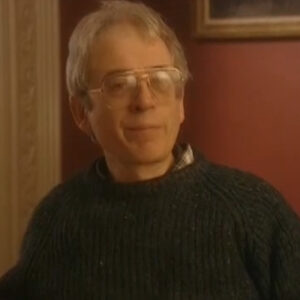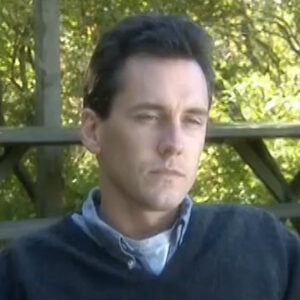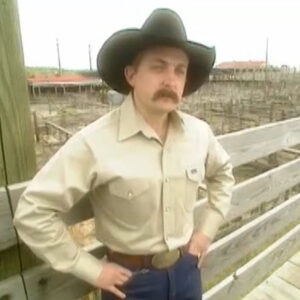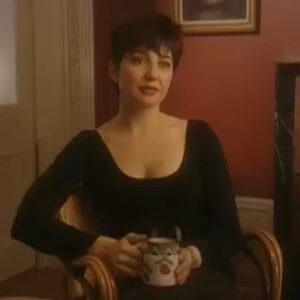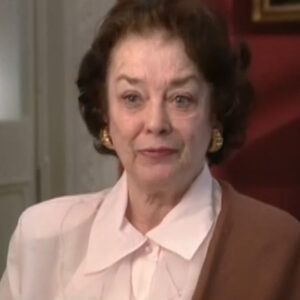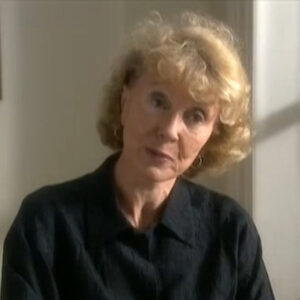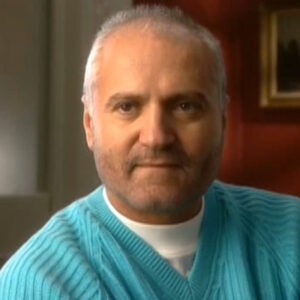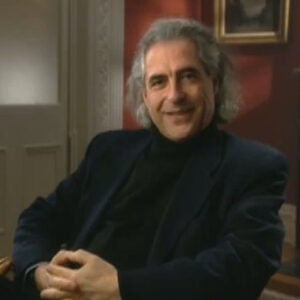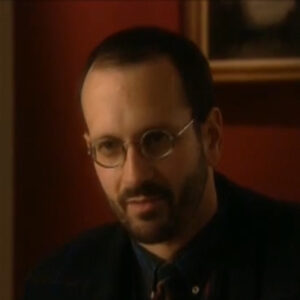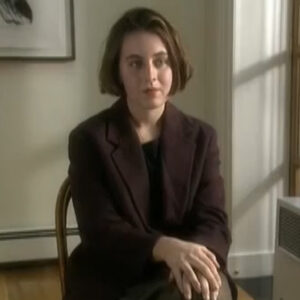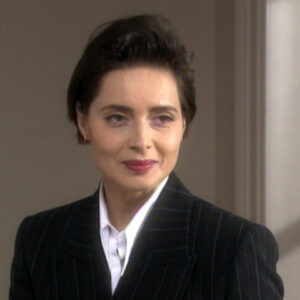Speaker Oh, my goodness. I started working with Dick in nineteen fifty and maybe nineteen forty nine possibly at Harper’s Bazaar and I was then I started to be a sitting’s editor. Very minimal sitting’s editor learning every minute as I still am. Nineteen forty nine fifty until 52 when I left for ten years and then returned to the Harper’s Bazaar. At the request of Diana Vreeland. And started up again working with Dick Abbadon. That was in 1964. And the last sitting I did with Dick Avedon was for Egoists, which has gained some fame. I’m happy to say that was in nineteen ninety.
Speaker You work with so many businesses. Describe what is similar about this work. He gets what he wants. The model he works with, his supporters supports and just the singularity style as well. Clarified.
Speaker I really would like to say that I think in my case, when I met Dick Avedon, it was something that my own self, my my own been responded totally to in personality.
Speaker And I think sometimes that makes a great deal of difference. It’s it’s like a love affair. To me, it’s like a very strong friendship to me. It’s vibrations that work from one person to the other. For me, it was Dick and myself and I was just immediately enamored of this young man.
Speaker And it he he touched so many things that I felt were hidden inside of me that I was able to get out through my friendship with him from the very beginning. A wonderful photographer, another man I respect so deeply is Helmut Newton. And it was wonderful to be able to have the contrast of Helmut and Dick, both in their heads, though very different, totally sophisticated, totally carrying, enormous passion and a little bit of meanness. Soft, hard. All of these responses that they gave off to me and I just fed off them.
Speaker Then there was Bert Stern, who was more theatrical, not really, but just completely different, faster in another kind of way that interested me.
Speaker Irving Penn.
Speaker Well, every moment I worked with Irving Penn was an experience. And again, completely different than the other men I speak of. I think probably I could stop right there because I do feel very strongly that Tom.
Speaker They were very much part of the formation of my I along with I think I hear I walk by Oshi, I’m sure I’m leaving somebody out. Please forgive me.
Speaker Don’t look so much in the camera, just going over some specificity what it’s like on the set.
Speaker How does he get from the start?
Speaker Helen? I mean, just from the start.
Speaker The model, whoever she may be, walks in. We’re all my team is always there early. I won’t have anybody. Nobody is ever late. I won’t have it. They walk in and Dick takes over his incredible interest in you. He zeroes right in. He looks in your eye. I’m talking about the model. Let’s call it Stephanie Seymour. Suzy Parker. You name it. Man. Woman, Baryshnikov. Area of doesn’t matter, Dorian. She walks in. Her coat is taken.
Speaker Want some coffee? How about some cross? If it’s in the middle of the day, it’ll be Collette’s chocolate cake. God forbid. It doesn’t matter.
Speaker They have a one on one conversation in instantly. Nobody else around. Just Dick and his subject. He knows it puts them at ease. He only one of the things he taught me one of the many things is you take the person comes in. He talks to her, to him, whoever. To them, they feel at ease. They have their coffee. They’re on their breakfast, whatever they need. There’s no feeling of rush. There’s no feeling of panic.
Speaker There’s a feeling of sort of there’s a seriousness there. Always you always know what you’re there for. And and that subject comes up instantly and is talked about and is embroidered on and is exaggerated, brought to almost an exaggeration. Then we hit the dressing room. We discuss. We look at the clothes. We try things on. He’s always there. Dick is there or I will try the clothes on and I’ll bring them out to Dick and I’ll say, Dick, get off the phone.
Speaker No, I need you. We have to make a decision. A decision.
Speaker All the decisions are made in advance so that when the moment comes for the picture, all of the energy goes towards that moment. And I must talk about that. So into the dressing room we go, we make a decision on hair and makeup. Unlike many photographers, Dick comes in, he looks at the hair, doesn’t like it. We try it another way. We try. It’s still another way. The makeup too strong. Take those eyes off. We never lose the person. We never you lose a certain human thing that is that person, because that’s the person we who has been chosen, the model or a personality. They’ve been chosen to do that picture. The person has to come through. It cannot be a mask, as we often can see. And so it’s this wonderful play of realism plus fantasy. But his energy, his caring, his right next to you. I mean, one inch away, he is there. And you feel him from the moment you walk in so that when so then he goes away and it’s my job and hair and makeup and we’re always talking and and we’re developing what we’re going to do. And the finished product by that time, it is my job to make that person feel like the most beautiful person in the world. It is a matter of wooing from the moment that person walks into the studio. I don’t bother to do that with a lot of other photographers. With Dick, it’s wooing from the beginning and it’s a wooing. That’s fascinating because it has to do with any kind of emotion can come up. And it and if the emotion is right and a positive towards the picture, we build on it. If it isn’t, we work with it. We get rid of it, it gets rid of it. So that when that when the girl goes on the paper and looks at Dick, she feels like the most beautiful person in the world. You get to the studio when the picture is being taken. What kind of music do you want? Or no music. But all of the energy goes to.
Speaker The moment there is no talking, any talking. Out. Out. And I warn all my assistance. And I mean, no talking. No whispering. Nothing to people. How are you? How was last night? Everything. Get out. Get out. He’ll throw them out. They all of the energy must go to the picture.
Speaker And it’s the most fabulous thing because you learn about total concentration. I can relate to the movies. I always want to be in the movies myself. But you can relate to this kind of concentration that goes to finding that moment, which gives the picture a specialness.
Speaker Let’s go back in time. It’s a funny story first there, huh?
Speaker Oh, that was difficult. Poor Mrs. Vreeland. I sort of felt sorry for. She’s Mrs. Reland told it that she had somebody, which was me that she wanted to meet and wanted to work with. And Dick said, fine, fine. But which one is she? This is brilliant.
Speaker Well, she’s the little dark girl. Kind of chubby, dark girl. Oh, you mean that noisy, noisy girl? No, no. I don’t want her in my studio. She’s much too noisy. And I was sort of heartbroken. So Mrs. Reland asked me to just tone it down. He’s finally agreed.
Speaker Let me come into his studio. And I, of course, was a wreck and but went happily. And I never said a word, not a single word. I mean, I was it wasn’t myself at all, was like holding back completely. And he said, Are you okay? I mean, yeah, it’s fine.
Speaker Well, let’s look at the clothes poorly. Come on.
Speaker OK. I hope you like the clothes.
Speaker Well, what’s the matter? I said, well, I don’t want to be noisy. Oh, well, he said this isn’t gonna work.
Speaker So for goodness sake, just be who you want to be. And that’s.
Speaker What I’ve always been with him, who I want to be for him. But I want him to always want it. Always work for him. Whatever I’m being.
Speaker Just describe as a soldier himself.
Speaker It’s yeah, it’s a completely my question.
Speaker Yes. Well, Helen, the Appends sitting has a great energy, are in a completely different way from an avidan sitting. No smoking, no music. And very little talking and communication. There is a certain sterility to pin setting. And this was my feeling in the very beginning. Then I realized it was not that way at all. But you have to learn what’s happening when you go in, go to a pen city and you have to understand the seriousness of how he feels about photography as best you can. He talks to you. He sees the clothes with you. He has a total opinion, instant, total opinion. And you were with Dick Avedon. You can play and bend a little bit with a visual. With Pan, not so much, because he’s does a different kind of picture, it’s quieter. And yet, no, it’s not quieter. It’s just a different way of picture taking. It’s more cerebral. Now, it’s not more cerebral, it’s it’s quieter, it burns inside you. It’s less. Dramatic.
Speaker It’s more comes from within.
Speaker I think you see all these words I’m saying, I’m saying them. And I don’t want to imply that Dick Dick’s Pictures don’t come from within as well for me.
Speaker They come from even farther within. But it’s just a totally different kind of picture taking. Both are special.
Speaker And a privilege. When did you first see Ford? Yes. His pictures of houses. Some historians just different. Yeah, they broke with tradition.
Speaker Could you describe a little bit about what was so startling about this work?
Speaker Martin Harrison is absolutely right. When Dick started and of course, he started taking pictures that when he was very young up his he was interested in movement.
Speaker And it was this new a new vision of taking a picture which involved movement. I think that came from Dick’s interest in the street. How sports, the theater, dance, or let’s just talk about kids his age running down a beach or running down the street or hailing a taxi or or in a playground. He was he he was fascinated with movement, all kinds of gesture and movement, and brought it to the forefront of photography. And it was a it was a complete breakthrough because like it like a curtain. There was a pictures that were being taken, were involved with gesture. More about a quiet gesture. Let’s just take smoking, for instance, the gesture of smoking. It was quieter deck and clothes were really shown. And you. And it was important to see everything, you know. Good for business, too. And Dick kind of pooh poohed that. It’s not that he didn’t understand business, but he wanted to get across the freedom of movement of a woman. And he brought that to fashion his fashion photography. And that was the first.
Speaker You have a different view. Oh, yes. His vision of a woman, Helen, was.
Speaker A very sophisticated vision. It was the same moment. You could take the same clothes and give it to Pan or give it to Helmut Newton. Dick would take it the same thing. And he would bring it to life. He would it would almost be for me if I was involved.
Speaker I would feel a little bit like cinema verité. It was like he brought an emotion into it. He the. You got dressed. The girl got dressed. For instance, the wonderful series he did with Mike Nichols and Susie Parker in Paris, which was a story. He brought his story to fashion. I mean, you got dressed and then you told a story you forgot about. Forget about what you’re wearing, Susie. He would say, forget Mike. You’re great. I want the emotion. I want what’s happening.
Speaker You’re having a fight here. You’re having a love affair. You’re making up. I wanted to come from your heart, your guts. I wanted to be felt on the in the picture and on the page. I want you to forget what you’re wearing, Susie.
Speaker But my skirt fell open. We’re taking the picture again because your skirt fell open and you took it and wrapped it around you because. Don’t do that. I want your legs. Let your skirt. It shows a certain energy that you are giving off. That has to do with your conversation with Mike.
Speaker That he brought to fashion for the first time storytelling that really touched our lives.
Speaker We the the the person looking at the picture could either fantasize into wouldn’t it be great to have that experience or maybe they’d had that experience.
Speaker But for me, Dick’s Pictures are more than just looking at a picture for the first time. You look at a Dick Avedon picture once you continue through the book. It could be his book. It could be Vogue. It could be Harper’s Bazaar. And then you look back at his pictures again and again, and you can see more and more within his picture. And I think that is a great gift.
Speaker Both men are both men, both with a pen and Avidan.
Speaker They make the subject. They immerse the subject. In what they want to do. And you feel. That the subject is absolutely at the peak of giving back what they want there.
Speaker They speak about what they want and they do it so well that there is an an emersion.
Speaker That the subject gets Endou and that affects the entire OMB also, and it affects the surrounding, it affects the cameramen, the lighting man. It affects everybody involved, which really has to do with, I think. Well, you could call it an ego of wanting to get.
Speaker A certain picture back and a certain rawness. If it’s that that they want, they’re going to get it. And they keep working until they do.
Speaker Why did you take us through the. Wonderful story. It shows how we work also. It’s just images that iconic Kinsky and state. Ah.
Speaker Well, we were in L.A.. I’m going to tell a story about. Nastasya Kinsky. And that the city we did for Vogue. We went to L.A. and worked in a studio and at a certain point we’d done some pictures and they were OK, the pictures. I was a little I wanted to get a little more earthy because I feel. And so did Dick that she really is a very earthy woman. And I want to bring up that. We never I never do with sitting with Dick that I don’t do my research first on the subject. And of course, Dick is completely thorough. So we are doing the setting and. We’ve taken about two pictures and we take a break, and when it’s upstairs in a sitting room where we dress and I asked her, I was alone with her and I said, what are you what do you like? Did you like any animals? One of animals, she said. What kind of animals? Well, she said, I like monkeys. And I said, You do. But don’t you feel funny about sort of that boon’s? I’ve always felt sort of funny about that. Boon’s ever since I was a little girl and my mother would always sort of take me past the cage because I’d be embarrassed at their backsides.
Speaker And she said, But a snake. Do you like snakes? And I said, no, I’ve I’ve never really I’ve never touched this thing. Well, you have to. I said, well, what are you saying? Do you like snakes? Should we. Well, tell me. She said, I love snakes. There is this guy. And he has animals. And he has this incredible boa constrictor and cobras. And I mean, you’ve take that snake in your hands. Polly can imagine what it feels like. And I said, well, shall we do a picture of a snake? Shall we get a snake? Sure. Let’s ask Dick. So that came up and he thought it was a great idea. So the snake arrived and after Nastasya started talking, you could tell. When she held it that there was something really sensual about a snake and I don’t want to be vulgar, but I held the snake and I can only tell you. That it reminded me of something else.
Speaker So after we got talking, some more addicts said, well, I think you should be nude. Fine. That’s great. So she lay down on the paper and on just can’t speak. And the snake had been, I must tell you, the snake, it was not dangerous. I mean, naturally, we wouldn’t do that. And the snake was enormous. And after she played with it a while, she held it and the handler of the snake explained to her and she was very insistent about the handler go away. And she just lay down on the paper and the snake started up her legs.
Speaker Up her legs, she opened up one leg. The snake wound up her little naked body and got to her ear. And when it got to her ear, he kissed her with his tongue. And Dick got the picture. And I was crying. It was a moment we couldn’t I couldn’t speak. It was extraordinary, sexual, seductive. Special, rare moment. And Dick Avedon caught the one time that snake kissed her ear. That’s a moment of greatness to me.
Speaker I taught him at another sitting. Very interesting one picture that means a great deal to Dick. This is Stephanie Siegel receiving.
Speaker Oh, we’ve gotten into so much trouble with this, definitely say more setting. Oh, well, that was about a decade of class and it was on a Sunday and he wanted me to do so. He called me and asked me if I would do a picture with him for the class. And I was very flattered. And of course, my husband always says, Have you ever said no to Dick Avedon, Polly? I mean, it’s Sunday. I’d like your help on Sunday. I said, well, not this Sunday, Dick. I mean, Henry, I’m sorry. I get their names mixed up quite a lot. So we talked about it a lot first. I really felt strongly about wanting to do a sort of cultural picture about women. And I wanted to do an up to date picture about the struggle of a beautiful young or any young woman today. And I have two I have two young daughters. Not now. They’re not young now, but two daughters. And I know through talking with them, one learns and young people of the struggles. And I was very conscious of the change in four young women when the pill came into existence. And. In 92, when this happened, 92, 93, not sure of my dates. We talked about, well, what kind of pictures should we do? I said, I think we should do a nude maybe. What do you think, Dick? Or should she be veiled? Sort of. And and just a specific part of her revealed, like, I don’t know. I mean, what I what I believe today, women, young women have to struggle with is their head and what’s between their legs. And so that’s how it evolved. And I, I said, I have found the dress. It’s a come to garçon dress. It’s like a stocking. And she will just put it on her body and it’ll be transparent, but sort of veiled and.
Speaker Then she’ll just pull it up.
Speaker And. You’ll see what you will see who will do that. Paul, I said, I think you want Stephanie Seymour. I think she is a girl. A beautiful young woman who understands what it’s like to be a beautiful young woman and the struggle that goes along, that goes along with it. She’s also had she’s lived enough of life, so she’s learned the hard way. And the easy way out, I just think she will give that back to you in her face, and she you won’t have any problem with her wanting to do it, but you have to explain to her what you want to do. And he went to the phone. He was very straight and very charming and honest.
Speaker And she said, well, well, I can’t wait. And she came in on Sunday. She left her brand new baby. She flew in from L.A. just to do the picture. And it is the picture that. We are all aware of and I’m very, very proud of it. I think there are moments when you have to tell you have an obligation or responsibility to tell certain stories or to show visually.
Speaker A thoughtful moment is that thinking women have.
Speaker See, very different. It was very difficult.
Speaker In Europe, I believe it was received very well. But then Nicole Nicole with NIAC, who is the publisher of Egoists, is a very daring, stretching woman.
Speaker And for that. I admire her tremendously because she’s not afraid to take a chance. Here in the United States, it was not received that well. And I understand that it makes me angry because I think that anybody over a certain age should understand the picture and should sometimes view a picture properly. And I think some people just their heads are just they’re not thinking it’s all just too thin, not good enough. The thinking behind some pictures, it infuriates me. Shows.
Speaker Have you. Have you interviewed her?
Speaker Was it good?
Speaker I mean, every sheet. I mean, what are we looking at? We’re look, I mean, you don’t know what it is for me.
Speaker I mean, I work with wonderful new photographers, but not one picture on this sheet. Every picture on this sheet, an emotion. I mean, look at this man’s eye and what she’s giving back to him. Extraordinary.
Speaker Extraordinary. This picture was not published.
Speaker Well, someday we’ll talk about what hit the cutting room floor, shall we, Alan? And I’m gonna call that book killed.
Speaker Yes. This picture was not published.
Speaker The seal. I mean, that’s what we call it, like she looked like a seal, you know? You know, I always am right behind Dick on the ground groveling right behind him. He didn’t mind at first. I wasn’t allowed to do that. But he gained his confidence and was always just two inches, five inches behind him. But sometimes in when you’re taking a picture like the SEAL picture and the bare breasted Lauren. You can’t tell what you’re getting the person unless you’re looking through the camera. But you do have a feeling that you that something is happening. That special.
Speaker And I did at that moment, the whole city was. Was what it always is. You come back feeling really good.
Speaker Did you talk?
Speaker Was there an idea about this beautiful together?
Speaker Yes. I think the seduction of the sun. We were we’re all sun people at sun and water, and we love the sun. And Laurin is extraordinary about the freedom for for her age. She was one of the freest people I’ve ever known. She taught me almost the word abandon. You have to let go and trust. And I remember a wonderful moment when we took a break during this sitting. It was early, early on in the city. And Dick came with Avalon, his wonderful wife, and.
Speaker And Dick said, come on, Lauren, let’s take a walk. And the next thing I know, Lauren and Dick are walking down the beach and she’s stark naked, except for a big hat. And they’re just talking a mile a minute and walking down the beach and walking back. And then I put something on her and a bathing suit or whatever, and we went on with the sitting. I mean, she is that free about herself. But I think when the sun is on your body, you feel dressed.
Speaker There’s something about the seduction of the sun. If you feel it. And in that time, you were not afraid of the sun. Little did we know. So I think basically that was a catalyst for the setting that made it a very seductive setting. Stuff completely sculptural, like a Henry Moore for me. Sculpture. I mean, that I took talked about it as being like a seal. But for me, basically, it was more like a Henry Moore piece of sculpture.
Speaker How about you could just maybe choose five or six of the models over a period of time because work work with and. Well, they brought perhaps a woman.
Speaker Yes. Well, when I started working with there, there was no question that Dick responded to certain young women.
Speaker This the first one that I realized I was jealous of was Suzy Parker, because I realized he was really enamored of Suzy Parker. Now, I’m not going to tell you he was in love with her, but she was certainly getting a lot more tension than I was. And that’s OK. I knew she’s beautiful and she’s the image. And so that’s OK. Sort of. But they knew each other before I came on the scene and the heat, that was a very different kind of relationship. And she scared me. She really did scare me. And I’m not sure I did my best work when she was around because she scared me. And I I couldn’t really feel comfortable taking chances with her, dressing her in a funny sort of way. I mean, I was starting to learn about myself and being a bit eccentric. Learning that I was different than other citizens. Editors definitely learning that and taking funny chances. But I didn’t sort of dare with Suzy Parker because I let it do it because they were such so together. They were always whispering together and talking together. And I wasn’t really a part of it. But then the next model that I felt was major for Dick was Jean Shrimpton. And that had to do with I felt closer to Jane. I felt our ages. Maybe we came on the scene at the same closer to the same time. And she and Twiggy were very I mean, I never held back at all with either one of them, and especially Jean, who was a great favorite objects, a very big favorite. I think third, I would say was verruca. And Verruca became one of my best friends, as she is today. And there was nothing I didn’t dare do with Verruca. And the moment when we went to Japan for four weeks with DEC cemented a new relationship that I felt with Verruca Dick and myself.
Speaker And there was no fear in me. I was able to totally let go. I didn’t feel I should be quiet or any jealousy or any funny feelings of being left out. You can’t help but feel left out sometimes when you’re so close to it being a part of a team. If. Dick and Gene are finding something they want to find together. I wanted to hear what they wanted to find together because that could change the difference in how I would approach how she would look. Maybe if she was going to be sort of like a demure and holding back and not showing too much, I might not open three buttons on her shirt.
Speaker Or if it was going to be more raw, I would open three buttons and and say, don’t worry about it. I’m watching you. Nothing vulgar would happen because I don’t believe in that. I can ever do anything vulgar, but I can do something provocative, which is real life. Then after verruca, I think we can take a break and talk about the next girl in his life, which I would say is Stephanie Seymour in between. I would talk about Ingrid Bouldin. Oh, Lord Hutton. Of course. Anjelica Houston. All of these young women are women who are like actresses who give something more. I’m sure I’ve forgotten somebody.
Speaker That’s a humorous story now.
Speaker This is sitting from a sitting from hell with Dick Avedon. I didn’t ever really have one. That’s honestly the truth. But I have had. Frightening moments. And I would like to say that probably one of the most frightening where I thought the city was going down, totally down the drain, was the one with Raquel Welch in Baha, California, where she was so difficult.
Speaker And at a certain point we were on the beach and she was telling deck which side of her face was the best side, which that was her father’s side, not our mother’s, at which point she slapped her mother’s side. And then she said, I want to be photographed this way and started to give Dick direction.
Speaker And Dick said, Well, Rachal, tell me again which side. Fine. And which way do you want? The sun and the light. Fine. And he turned to get in. Who is lighting man who we call your Waddah Lumiere. And he said, Would you put my camera on an extension? And he handed the camera to Rakow with the extension on it. And he said, Rakow, you take your own picture. I’m leaving. And he left. And she looked at me and I looked at her and Aragon laughed and I said, Who takes over now? What do we do? And so the sitting stopped and it stopped for a good three hours. And he let her sweat. Good.
Speaker Just what she needed and what a mistake she made.
Speaker You don’t. You must know.
Speaker Who? You’re in the presence of. And she was in the presence of Dick Avedon, who would have made her turn a corner and how she would look and be and act. And I think it might have changed her career. I honestly do.
Speaker I feel that way about a lot of things that Dick has come in contact with where the subject did not let him take over. Trust him because there is so much to learn. And he has an ego. He wants the picture to be we. He wants to come home and have everybody look at it and say, Wow. His name is under the picture. So don’t you want to give the most the most you can not recount? And she never did. Not for the whole setting. The sitting is good. There’s no question. It’s good. It’s Dick Avedon. But it could have been something much more.
Speaker How about talking about your interests now sitting? What emerged in your response to this response, which just.
Speaker Well, what a dick asked if he could do my portrait. And. I was enormously flattered. And when the moment came.
Speaker I wasn’t afraid at all because I am the kind of person who, first of all, I’d had the privilege of being behind the camera with him for many years. So I knew that if I said yes to having my portrait done, I wanted to give him. Myself from way down deep. And Dick, I think, would not have he asked to do my portrait, I guess, because maybe he saw that. And knew that there was a friendship that had grown. That was highly emotional. And highly real. And I’m very emotional about it because Dick’s friendship to me.
Speaker It’s a treasure. And I don’t take it lightly. I need it and I have it. And I gave that back and wanted to give that back in in the picture that he took of me.
Speaker And there were two we worked for on the roof for a couple of hours. And it was like. He talked to me about my family, about the children. We talked about happy things, we talked about unhappy things, and it was like a purge for me because that’s what I wanted to give him. And. It was almost like, I suppose if I’d had a psychiatrist and I only had one chance to go to one. That’s what I wanted to give. And so I did the best I could for him.
Speaker I wanted him to be proud of me. I want to say that I always wanted him to be proud of me. After every sitting we ever did, I always felt like it was like having a baby. I mean, I suffered till the pictures came in and. And is everybody going to like them? Are they too out there? Are they good? But I always wanted him to be proud of me. I was always trying to please him. It was a love affair for me. There’s no question it’s not. It’s another kind of love, but it’s definitely a love affair. And.
Speaker When the picture was over.
Speaker He seemed pleased and I put on a face and did did a poly laughing, you know, that other side of me.
Speaker And by the way, he did get me laughing. He wanted both sides of me because he knows that I have a very serious side and a very another sort of laughing, joking side.
Speaker I went home.
Speaker And I like almost passed out. I mean, I went to sleep and my husband came home and I was just lying on the bed in with the light eyes, are you all right? And I said, Well, I’ve just been asleep for three hours or two and a half hours. I realized what I had given.
Speaker And I was just spent and I just took a nap, and the next day or a couple of days later, I saw the pictures and I was. Thrilled. I’m not sure I saw the pictures. No, I didn’t see the pictures. I’m absolutely wrong. I did not see the pictures. I didn’t want to see the pictures. I wanted him to pick the picture he wanted because he knew me. He knows me. And the moment when or when the picture was shown at his exhibit was a very moving moment.
Speaker And my husband said took me in front of the portrait and said because I had closure. I said, I’m going to close my eyes and you tell me when to open them. And he said, Well, you can open your eyes now, Polly. And I opened my eyes and Dick’s and Henry said, See, I was I. Many times I make that mistake. That’s my Polly. And I was very happy. Really, really happy. My children love it. They love it.
Speaker However, some people said to me is it’s terrible. You look like a cripple. It was it was not a halfway response. It was. Some people thought that I looked like a cripple. I tried to understand what they meant, but they were offended. I think a lot of people view portraiture. As being almost a in a cosmetic sense, Helen, meaning it should be something that’s beautiful.
Speaker It’s going to be on your wall. You’re going to see it. And for me, that is a very old fashioned point of view or it’s not an old fashioned point of view. You find you have that point of view. I don’t.
Speaker I think it’s a great chance to show your inner self. Don’t you want people to know you? For better or for worse.
Speaker If you make that commitment to somebody who does your portrait, don’t you want to show them you?
Speaker Otherwise, why do it? But I’m not I’m not comparing. I’m saying that it’s up to the the sitting, the person, the subject to say how they feel about portraiture. And that’s what you’re going to get back. May I? It’s I don’t believe in doing something that it is too thin anymore.
Speaker I like to have it mean something.
Speaker What was your first reaction? This was a shock.
Speaker So my shock was simply of what he caught the moment that he caught Babs read it incorrectly.
Speaker But I mean, that’s happened before. When I gave birth to Lesley Bell, I started to cry. The rumor spread on the main line that I was disappointed I didn’t have a son. I mean, it’s ridiculous.
Speaker It was so emotional for me. I was thrilled. That’s Polly. That’s the serious side of me. You know, that’s the hard side of me. That is hard for people to deal with. They love me, lots of people.
Speaker And I know they love me and they know that I get hurt and that I show when I get hurt on my face.
Speaker And when I bleed inside, I show it. And. I can’t help it. And I want to. And that’s life and that’s living life.
Speaker And that’s a quality that a person who’s taking your picture can get if they have the talent of a Dick Avedon.
Speaker A toughness. I guess caring, I hope a sadness. A sense of knowing about sacrifice. I bring that up because a career girl is a is a lonely role. To have a career, an intense career is a lonely role.
Speaker And you make sacrifices. And my big sacrifice, which I have learned was that I was not there for my family. At times when I should have been. But my support system is my family. And they believed in me. And they did not question me ever. Today I have one child who has suffered from the fact that I wasn’t around. At times when she needed me. And together we are going through that moment of sacrifice at a time when when it’s many years afterwards. But I say that only because I’m sure that is something that anybody who has had a career and the privilege of having. If you’re gonna have the job I have had I’ve had the best opportunities in the world. You have to. Are there are people out there that understand what I’m saying?
Speaker So much of that was poured into that. Yes. Tell us a little about the two pictures.
Speaker The laughing one.
Speaker Well, I mean, I have to work on my own self to bring levity to the crowd, quote, unquote, and not be too heavy going.
Speaker I know I’m saying that in a sort of facetious way, because I think it’s OK if you don’t feel like being funny.
Speaker But I know that sometimes things can get a little too heavy. So when I’m funny, I can be really funny. And so I tell jokes and I tell dirty jokes. And I do I’ve learned I learned when I was little to be as I was the youngest of four girls, I learned to be very funny. And that was to get attention, obviously. And that went on. And I have that sense, that sense of humor is there inside of me. But it is not the big side of me, but it is a side that is necessary.
Speaker I know that. And that was the smiling, laughing picture dipped. Did a picture of another picture of me when I had I won an award. And so we want. Wanted to do my portrait because he was presenting the award to me and he wanted to do my portrait. And when I arrived. It was very funny because I I got dressed in my beautiful dress, black, of course, I wear a lot of black and I got on the paper the now same.
Speaker And I looked at them and I said, well, you know, I got it. Yeah. And he said, that’s the picture we’re going to do.
Speaker You’re going to raise your hands and be like a prizefighter and say, yay, you got it. There’s not going to be anything duer going on here.
Speaker I said I really. He said, I’ll do both. And we’ll look at the pictures together. OK. I said, All right. And so I liked another. So the next day I went there and I liked another picture.
Speaker And Norma and Dick said, Are you kidding?
Speaker Look at this picture.
Speaker It’s great. We’ve got to do this one and it’s up. Polly, let’s beat up. Let’s not have anything down. It should be all very up. We’re not going to show that. No, no.
Speaker But he didn’t choose the dark picture for the portrait.
Speaker Yeah, well, that’s different, isn’t it? That’s his book. You don’t win an award. It’s not about winning an award. The award is poorly. Can I take your portrait? That’s the award.
Speaker What is. Story?
Speaker Just what’s involved. Yeah. And then how it. And also how it evolves, how it evolved. What’s involved in it. Tiny Dick. I had to watch for brother.
Speaker Just so people get a sense of what it is.
Speaker Yeah. Well into his fiction today. Helen, I am the oldest living sitting’s editor in the world, which should be pretty impressive.
Speaker And there’s a lot that goes along with it. But I’m no different than I was when I started, except that I have a lot of knowledge of what I think of an idea.
Speaker Obviously a fashion idea. And then I talk it over with my boss and we put a photographer to the idea who we think would be the best.
Speaker We. We talk with our I talk with my art director.
Speaker And from then on, I run with it with the photographer that’s chosen. From that moment on, I do research. I.
Speaker Read books. Everything is visual. I look at movies. It depends on what the subject is. I did an urban cowboy sitting with a young photographer who’s really growing. His name is doing X and I immersed myself in Taxi Driver.
Speaker Different movie’s a different time. And I cut things out. And I look at makeup and hair. And then I put the girl to it. And then I pick the clothes and we pack it up or we pick a location or we go to a studio. And by that time, we have developed the image of what we want, constant conversations with the photographer. Now, a lot of Sitting’s editors don’t work this way. But this is the way I work. And if that’s your question. This is the way I work. I learn to work this way with Dick Avedon, because when you had the same working pattern with Dick Avedon, the only difference is Dick Avedon would call every day, would call three times a day.
Speaker Oh, Henry would say it’s there on the phone again, Polly. Or he’d send me a picture that related to it or whatever it was.
Speaker He was constantly thinking about it, never stopped thinking about it. I share all of that with every photographer I work with today. I share my working pattern that I learned with Dick Avedon, with every single photographer I work with today. I think it’s the best pattern.
Speaker For one second, I have to think of his name. Hold it. Will be given a.
Speaker It’s a very painful portrait, it’s the portrait of Oscar Levant.
Speaker Scribing. It must be there must be a kind of a morbid side in me somewhere lurking. But I’ve always been enormously interested in show business. And here is a man who’s a genius.
Speaker I mean, I’ve heard him play the piano. Have you heard him talk? Have you heard his jokes? He’s a genius.
Speaker And yet, out of that face comes a suffering. A true and honest suffering. I mean, for me, it can go right down next to the picture of Pam and the little war baby sitting on the platform. It is the story of show business. And it is on Oscar Levant’s face. There are many, many portraits of dicks that. Absolutely blow my mind. Another is. The beekeeper. So you see, I’m talking about things that sort of shock me. And yet I can’t take my eyes away from them. I look at them and I’m and I’m still looking. And there’s something very deep and very morbid happening.
Speaker It’s hard for me to pick one, you ask me to pick one. So that’s the one I go for.
Speaker I regret I truly regret it.
Speaker I really regret it. And I think the person has made a big, big, big mistake. And that’s Marlon Brando. He never photographed Marlon Brando. I wish he had. And even now, because Marlon Brando I mean, it’s because of, you know, what. What he could give if he’s willing to give it. Now, there’s all of that, isn’t there?
Speaker One less thing I asked for photographs from which was on deck is his sense of human being so isolating and absurd as well? Of course. His own personal history is about the complexity of his response to beauty.
Speaker Well, I think is his response to beauty is is re so real and and I it’s hard for me to think about that.
Speaker I have. I have to really ponder it. When I think about beauty, I think about. He approaches beauty. It has to be more than just surface beauty. There has to be more to it, more meaning in depth.
Speaker I mean, there can be. It could be Jean Shrimpton. It can be. Gina Machado. It could be the child in Japan in the Erman.
Speaker It has to have something coming from within. For Dick, it has to be more meaningful than just then beauty. One can compare pens, flowers. And his approach to beauty in in nature. I don’t know. I think Dick is very aware of beauty and I think he has portrayed it in the very best way. But it’s a subject I would love to discuss more with him.
Speaker The subject of beauty because he is talking about is a very dark way, as well as sees it as having hurt his sister, too, as a way I see contributing to her problems and sometimes to women’s problems. It’s a very complex.
Speaker Oh, yes. It’s not as simple as. Oh, no, no. It can never be a simple celebration for him. It has to because he knows that to be beautiful is to have the other things that go along with it that are a burden many times. Most times.


